Granma 299
From James Monroe to Marilyn Monroe

From James Monroe to Marilyn Monroe: America for the Americans
American cinema is one of the most powerful weapons of the culture and symbol war that threatens us today.
April 4, 2018 20:04:06
A CubaNews translation.
Edited by Walter Lippmann.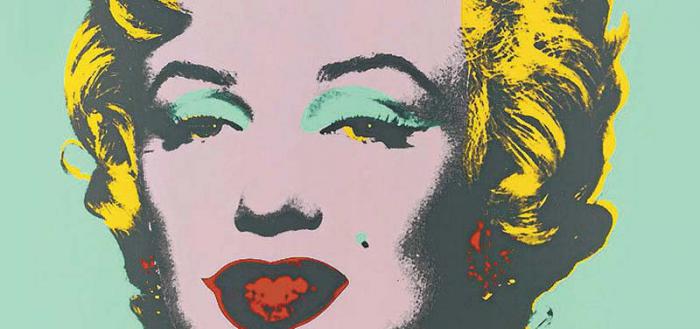
The industry turned the beautiful blonde Marilyn Monroe into a glamorous sex symbol, an object of collective desire. Photo: MOMA
Rene Greendwald, a veteran CIA official, said in a preparatory meeting for the Genesis project, aimed at the cultural war against Cuba, that they had been more successful in Latin America with Marilyn Monroe than with the Monroe Doctrine. The CIA specialist, who also said that the scenario of a conventional war was well interpreted by the Cubans, whom he believed were capable of facing and defeating any attempt at military occupation, was right, but he always raised the question: And when the enemy is in your living room? How do you identify in a series of your choice, in a film, in a sports programme, in a raeality show or a talk show, an action of the enemy?
American cinema has effectively contributed, on our continent in particular and in the world in general, to the efficient “selling” of the American way of life, to instilling in people’s minds the image of the superiority of Americans, the invincibility of their army and the inferiority of the peoples of the southern hemisphere. It has helped to distort history, to sell us its products, to impose its fashions, its national symbols.
THE GREAT DREAM FACTORY
U.S. cinema, in the midst of a process of expansion and development, reached Europe and spread throughout Latin America after the First World War. These were the happy 1920s, which corresponded to the period of economic prosperity in the United States from 1922 to 1929.
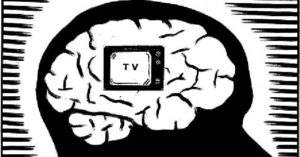 Hollywood cinema is becoming an efficient tool for “Americanizing”, or simply transmitting the values of the American way of life, spreading the stereotypes outlined by psychology in its prestigious universities, to the cultures and ways of being of the people of the rest of the countries of the world.
Hollywood cinema is becoming an efficient tool for “Americanizing”, or simply transmitting the values of the American way of life, spreading the stereotypes outlined by psychology in its prestigious universities, to the cultures and ways of being of the people of the rest of the countries of the world.
Hollywood cinema is becoming an efficient tool for “Americanizing”, or simply transmitting the values of the American way of life, spreading the stereotypes outlined by psychology in its prestigious universities, to the cultures and ways of being of the people of the rest of the countries of the world.
MLK Dreamed of a Different America

Recalling the Memory of a Man Who Dreamed of a Different America 50 years ago.
Martin Luther King was honored in many places around the world today on the 50th anniversary of his murder.
Author: International Editor | internacionales@granma.cu
April 4, 2018 21:04:51
WASHINGTON: The life and work of Martin Luther King, a symbol of the struggle for civil rights in the United States, was remembered in the United States and much of the world today.
The murderous bullet that killed the renowned Baptist pastor in Memphis, Tennessee, on April 4, 1968, deprived humanity of one of its most tireless activists, who has since become an example to many of those who dream of a better world, reports Prensa Latina.
King dedicated his life to demanding an end to discrimination in the United States, where hundreds of years after the war of independence, blacks could not access certain places and had no right to vote.
He was also a harsh critic of the Vietnam War.
Despite the public notoriety he achieved, the activist was investigated and harassed by the FBI. In recent years, the real extent of the official political persecution of his movement, which included wiretaps of private calls and the spread of unfounded rumors, has come to light.
This Wednesday, personalities from around the world remembered his historic speech on the Lincoln Memorial esplanade in Washington, D.C., where he spoke the historic phrase “I have a dream.”
Half a century later, many of their demands remain unfulfilled in the United States, where discrimination and differences between blacks and whites continue to be a daily reality.
King’s granddaughter, Yolanda Renee, recently climbed on a platform to remember the Baptist pastor’s words when he asked that “his four little children be judged not by the color of their skin, but by the content of their character.
“I have a dream where we’ve had enough and where this world is one free of weapons. Period,” said the nine-year-old.
For his part, the president of Venezuela, Nicolás Maduro, recalled the legacy of the American social leader in a message published on Twitter.
“Martin Luther King was shot in the head in 1968 while greeting his followers in Memphis, Tennessee. Venezuelan young people must know their struggle and their dreams for us to make them a reality,” Maduro said.
Meanwhile, in Cuba, he was honored in a monument erected to his memory in the central park of 23 y F in the Vedado neighborhood.
The memorial event, organized by the Memorial Center that bears his name, opens a broader agenda of activities to be carried out this year related to the event.
Victor Fowler, director of the Centro Cultural Dulce María Loynaz, said Martin Luther King was an example of commitment and strength.
Life, Guns and Votes in the U.S.A.

Life, Guns, and Votes in the USA.
Some one million people, mostly students, took to the streets of 800 U.S. locations last Saturday to demand greater control over access to weapons.
————————————————————
Author: International Editor | internacionales@granma.cu
March 27, 2018 22:03:04
A CubaNews translation.
Edited by Walter Lippmann.
Young people in the United States raised their voices this weekend against violence, under the theme March for Our Lives. Some one million people, mostly students, took to the streets of 800 towns across the country last Saturday to demand greater control over access to arms.
The mobilization follows one of the most recent school shootings, in Parkland, Florida, when, in the midst of Valentine’s Day celebrations, a 19-year-old boy killed 14 students and three teachers carrying a legally acquired assault rifle.
The fact once again opened up the debate in a country where there are an estimated 200 to 300 million guns, almost one per capita, and where lobbyists such as the National Rifle Association (NRA) are lobbying hard in Washington to avoid any legislation that would diminish the profits from their lucrative business.
NO TO GUNS
Such was the scope of the demonstrations, that some of the older attendees remembered those of the young people decades before against the intervention of the United States in the Vietnam War.
Mary Riley, a 50-year-old filmmaker who traveled from San Francisco to Washington to support young people, said, “What made a difference in Vietnam was when the students went out on the street and now the students are the ones who were shot and they are also future voters.
In that sense, one of the survivors of the February shooting told the crowd: “We can and will change this world!».
Tired of the killings and school insecurity, young people are asking politicians for more action, not so much their “prayers and thoughts”.
Vietnam, successes, and challenges

Vietnam, successes, and challenges
After 32 years, the country’s outstanding economic indicators show the success of the Renovation Policy (Doi Moi), but also the important challenges it faces in order to ensure the full well-being of the population.
Author: Iramsy Peraza Forte | internet@granma.cu
March 28, 2018 21:03:30
A CubaNews translation.
Edited by Walter Lippmann.
More than four decades after the victory over the American invaders and the beginning of reunification, Vietnam remains an inspiration.
The nation that became an example for all the revolutionaries of the world, stands today as a symbol of self-improvement.
The route taken by the implementation of the Doi Moi policy in 1986 not only enabled the Vietnamese to recover from that bloody war in which the United States, with the exception of nuclear weapons, used the most advanced military technology, but also catapulted them into one of the most dynamic economies of today with remarkable growth rates.
After 32 years, the country’s outstanding economic indicators demonstrate the success of this process, but also the major challenges it faces in ensuring the full well-being of its people.
Today’s Vietnam is not only strong and consolidated, it is also one of the territories with the greatest socio-economic progress in Asia. Over the last decade, the state has experienced sustained growth and last year the Gross Domestic Product (GDP) exceeded US $220 billion, with an expansion rate of 6.81%, the highest since 2011.
The renewal driven by the Vietnamese Party and Government has been focused on the diversification of the economy, as well as its insertion as a competitor in the world market. The country has gone from being a net importer of rice to becoming the world’s second-largest exporter. It is also discussing the top spots in the export of other products such as coffee, rubber, textiles, and footwear. In 2017 alone, exports exceeded US $213.77 billion, up 21.1% year-on-year.
In less than two decades, more than 20 million people have been lifted out of poverty. Primary school enrolment has reached almost 100%. Life expectancy is now around 70 years. These indicators, together with rapid economic progress, have placed it among the fastest-growing emerging countries.
The renewal also established a gradual growth strategy that combined domestic policies with the creation of a network of geopolitical alliances, first in the region and then towards the rest of the world.
The impact of Doi Moi is also notable in the process of industrialization, one of the long-term goals of the Indochinese country. Despite facing more than 20 years of a blockade imposed by the US government, Vietnam opted for the construction of a socialist state that would transform its primary economy from manual agriculture, where 90% of its population was rural.
Some of the routes approved at the 12th Congress of the Vietnamese Communist Party (VCP) to achieve the goal of industrialization, set for 2035, have already been undertaken. They involve renewing the economic structure, raising productivity, strengthening macroeconomic stability and developing human resources to improve competitiveness in a technology-driven world.
But like any strategy, Vietnam’s reform process can also be improved and there are a number of challenges that Vietnam must face.
To continue on the path to success, the country has set out to create a greater investment climate, to free up much more productive forces, to deploy all economic components and to increase competitiveness, a prerequisite for consolidating itself as a middle-income nation and taking the next step.
But economic progress is only one part of the Vietnamese renewal process, and despite progress, the social costs of that transformation are recognized.
The total eradication of poverty, the reduction of inequalities, the reduction of child mortality and environmental sustainability, among others, are essential issues for the nation, aware that only in this way can it emulate the developed countries.
According to their authorities, to achieve the prosperity of all Vietnamese people, it is necessary to fight to narrow the gap between rich and poor, to pay greater attention to mountainous, remote and devastated areas and to generate greater opportunities for the most disadvantaged.
Achieving full access in education and exponentially improving its quality is another of the challenges and priorities of Vietnamese policy, which is committed to increasing resources for the training of its young people, who will have nation-building over their peers in the future.
United Against State-Sponsored Weapons

Youth United Against State-Sponsored Weapons
The great march, which is already listed as one of the most vibrant in Washington’s contemporary history, was organized in that capital city.
——————————————————————————————-
Author: Darcy Borrero Batista | darcy@granma.cu
27 March 2018 19:03:47
A CubaNews translation. Edited by Walter Lippmann.
There is “no such thing as an American citizen’. I always remember that quote from a friend from St. Louis, Missouri, an exchange student who spent a semester at the University of Havana. He explained it through the idea that Americans are very different from each other: 50 states on a single flag of stars and stripes. The thirteen (former) British colonies that united and expanded to form a single state.
That’s one of the reasons why many are surprised to see together in one voice, in Washington alone, more than half a million northerners on the march for a cause. It happened on Saturday, March 24th. One month and ten days after Marjory Stoneman Douglas High School in Parkland, Florida, where 17 people were killed by AR-15 rifle fire.
HOW WAS THE MARCH ORGANIZED FOR OUR LIVES ORGANIZED?
The great march, already listed as one of the most vibrant in Washington’s contemporary history, was organized in that capital. The goal is clear: to denounce the armed violence that is spreading like a virus in the nation of Lincoln.
Because of its sensitive nature, it overwhelmed the city of the White House and the Capitol and reached the entire country in the form of mass demonstrations united in the cry of “enough”.
It was the young survivors of the February 14 events in Parkland who drove it forward, but around them – Emma Gonzalez, David and Lauren Hogg, Cameron Kasky, Jaclyn Corin, Alex Wind, Sarah Chadwick, Dylan Baierlein and Matt Ditch, among others – many stood for the same struggle, both physically and in social networks and other media.
Although the heart of this cry was born in Florida; in the throat of that Washington of McDonald, Coca-Cola and Starbucks locations, tens of thousands of people took to the streets to demand restrictions on access to guns in a country that sadly stands out for an arms race that finds no goal: it is the nation with the most guns and rifles per capita on the globe.
New York, the artistic capital where the Statue of Liberty stands, also exceeded expectations.
A Yahoo News text states that the March For Our Lives and its international aftershocks “sent a powerful message against the legislative deadlock that has long prevented stricter gun laws from being adopted in the United States, where mass shootings in schools and universities have become frighteningly common.
So the march served as a reminder of similar massacres, such as Columbine and Sandy Hook.
THE ALLIANCE BETWEEN ARMS AND THE ESTABLISHMENT
This type of massacre is not new at all. Part of what theorists have called the alienation of individuals in capitalist societies where the culture of shooting reigns as a reflection of excessive production and “consumption” of weapons.
Much was said when, less than a month after the Parkland victims were buried, with their bodies still warm, the National Rifle Association (NRA) was holding an arms fair in Florida.
But nothing’s going on. Shocking the U.S. government seems like a Mission Impossible type of adventure, considering that arms agencies finance presidential campaigns.
For Jesús del Toro, in Yahoo Noticias, despite the enormous social support that the movement of these young people has, “articulated for now around the slogan and label #NeverAgain, the magnitude of its objectives and its detractors requires long-lasting work that goes beyond the marches of one or several days, which are incisive and relevant but only one component of a greater activism.
IN SOCIAL NETWORKS AND OTHER LATITUDES
Alumni of the Parkland school and other allies succeeded in setting up a digital communication laboratory, designed to spread their message effectively, so that society will remember it and take it with them as a banner of peace. To achieve this goal, the teenagers took to social networks and other virtual media as a campaign scenario.
Although they did not give statements about the location of the lab, they told the press that it is especially dedicated to conceptualizing and producing content to drive #NeverAgain’s ideas and proposals for change.
With the symbology of the meme and also with YouTube videos and content for various platforms such as Snapchat, Instagram or Twitter, the #NeverAgain movement and its communications lab reflect a very unique “theatre of operations”, which Columbine did not have in 1999, for example, and prevented a horizontal form of communication, “you to you”, from reaching people better.
This showed the great national support of young people from all over the country and figures from the world of politics and entertainment. Among them, Democratic lawmakers, such as Senate Minority Leader Charles Schumer and Reps. Gwen Moore, Eric Swalwell, Paul Tonko and Sheila Jackson Lee, changed out their Twitter picture for one labeled #Neveragain.
For these, hand in hand with the youth, it’s now time to update the Second Amendment, that constitutional amendment that protects the right to bear arms.
From other geographical spaces, cut off by the proximity of digital devices, expressions of support were also made. as one Twitter user wrote: “Good luck from Scotland to all those who will be protesting in America, stay proud and speak up.
Perhaps the most encouraging thing in the midst of these actions is that, in the same country where many vote for misogyny, white supremacy, among other forms of intolerance, the same thing breaks the inertia to make change possible, precisely because of the potential victims themselves.
The result is that today it can be read on many platforms that the teenagers who survived the AR-15 attack in Parkland became gun control advocates and have not only counterpointed social networking with gun rights activists. Despite them, these students demand laws that promote safety and the right to life.
Life, arms and votes in America.

Life, arms and votes in America.
Some one million people, mostly students, took to the streets of 800 U.S. locations last Saturday to demand greater control over access to weapons.
Author: International Editor | internacionales@granma.cu
27 March 2018 22:03:04
A CubaNews translation.
Edited by Walter Lippmann.
Young people in the United States raised their voices this weekend against violence, under the theme March for Our Lives. Some one million people, mostly students, took to the streets of 800 towns across the country last Saturday to demand greater control over access to guns.
The mobilization follows one of the most recent school shootings, in Parkland, Florida, when in the midst of the Valentine’s Day celebrations, a 19-year-old boy killed 14 students and three teachers carrying a legally-acquired assault rifle.
The fact once again opened up the debate in a country where there are an estimated 200 to 300 million guns, almost one per capita, and where lobbyists such as the National Rifle Association (NRA) are lobbying hard in Washington to avoid any legislation that would diminish the profits from their lucrative business.
NO TO GUNS
Such was the scope of the demonstrations, that some of the older attendees remembered those of the young people decades before against the intervention of the United States in the Vietnam War.
Mary Riley, a 50-year-old filmmaker who traveled from San Francisco to Washington to support young people, said, “What made a difference in Vietnam was when the students went out on the street and now the students are the ones who were shot and they are also future voters.
In that sense, one of the survivors of the February shooting told the crowd: “We can and will change this world!».
Tired of the killings and school insecurity, young people are asking politicians for more action, not so much their “prayers and thoughts”.
Brazilian anti-violence activist shot to death

LEADING FIGURES
Brazilian anti-violence activist shot to death
The event caused a stir in Brazil, as she was a woman respected and admired by Brazilians for being a fervent advocate for social causes.
—————————————————————————————————————————————————————————————-
Author: Gabriela Ávila Gómez | internet@granma.cu
20 March 2018 21:03:48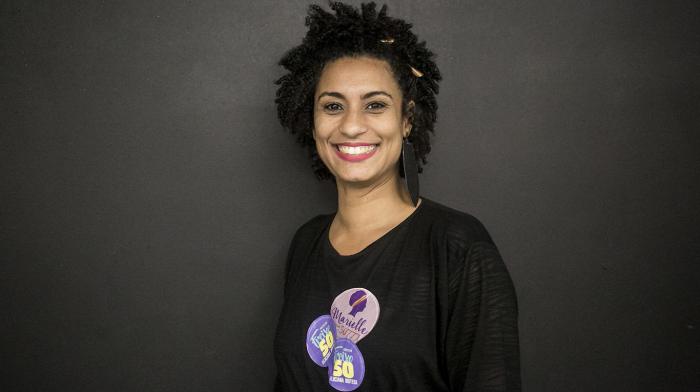
Marielle Franco
Place of birth: Rio de Janeiro, Brazil
Date of birth: 27 July 1979
Date of Death: March 14, 2018
Occupation at the time of her death: Sociologist and councillor in Rio de Janeiro
Political affiliation: Socialism and Freedom Party
Alma Mater: Catholic University PUC and Federal University Fluminense (master’s degree)
Photo: Taken from TN.COM
“Another murder of a young person who may enter the Military Police account. Matheus Melo was leaving the church. How many more will it take for this to end?” That was the last message on the social networking site Twitter from Rio de Janeiro city councilor Marielle Franco, who paradoxically became the next victim just 24 hours later.
Criticizing the military intervention ordered a month ago by the de facto president, Michel Temer, the activist had emerged from an act of defense for black women and was riding in a car when the shooting began.
According to the Brazilian daily O Globo, the goal was to reach the councilor, who was shot five times. The driver also died in the accident and only one of the advisors who accompanied her survived.
The event caused a stir in Brazil, as she was a woman respected and admired by Brazilians for being a fervent advocate for social causes. There have been several marches and mobilizations called by political parties and social movements under the slogans “Luto e luta” (Mourning becomes fighting), “Murdering police, they will not silence us” or “Warrior woman who died for the people”. Demonstrations were also held in Argentina.
Marielle Franco was a woman, young, black, a favela woman, but she managed to make all these elements – still discriminatory for many – her driving force in the struggle, and from every possible platform she dedicated herself to raising her voice against racism, machismo and the abuses committed by the police in Rio de Janeiro.
The activist was born and raised in La Maré, one of the most violent slum complexes in Rio. At the age of 18 she became pregnant and dropped out of school, but later she attended night classes. Thanks to a scholarship, she obtained a degree in Sociology from the Catholic University PUC, one of the most prestigious in the country. She also held a Master’s degree in Public Administration from the Federal University of Fluminense.
One of the events that marked her in her youth and that defined her later line of work was the death of her best friend due to a stray bullet in the Maré; this led her to work on the denunciation of violence within the favelas.
In 2006, she became parliamentary assistant to Marcelo Freixo, He was an emblematic deputy who fought terror unfounded by militias in the favelas. Years later, Franco headed the Commission for the Defense of Human Rights and Citizenship of the Legislative Assembly of Rio de Janeiro.
At the time of her death, Franco was a member of the Socialism and Freedom Party (PSOL), and on this political platform she became the fifth most votes for municipal legislator in 2016.
Both the councilor and the PSOL were among the biggest critics of the military intervention ordered by Temer.
In this context, Franco became the rapporteur of a commission set up in the Rio municipal chamber to report on possible abuses committed by the military in this intervention.
She gained respect and admiration for the ideas she promoted: that of a greater presence of women, especially black women, in politics, the defence of human rights and her denunciations of the abuses committed under the pretext of stopping the violence in Rio.
In the palace of the Municipal Chamber, where the activist’s remains were veiled, the steps were covered with flowers and banners.
Many organizations and personalities around the world have called on the Brazilian authorities to explain this brutal act, which they describe as a “political assassination”.
In the midst of the investigation, based on the hypothesis of premeditated murder, it emerged that the ammunition that ended Marielle Franco’s life was part of lots sold to the Federal Police of Brasilia in 2006. This fact that opens another discussion and raises the question: was it the activist murdered by the police?
Translated with www.DeepL.com/Translator
Never again!

Never again! The students’ cry against guns in the United States!
Parkland students’ pressure even reached the White House, where President Donald Trump met with several of them and their parents on Wednesday.
————————————————————————————————————————————
Author: Sergio Alejandro Gómez | internet@granma.cu
22 February 2018 20:02:57
A CubaNews translation.
Edited by Walter Lippmann.
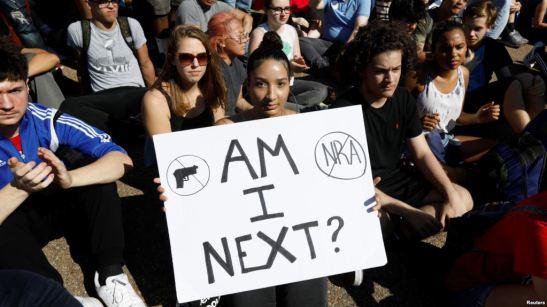
“Am I next? “, reads on this poster of one of the students’ protests against the carrying of arms and the National Rifle Association. Photo: Los Angeles Times
Hundreds of young people, with tears in their eyes for the friends they lost and, also, although it may seem contradictory, for the good fortune of having survived; human chains guarded by the police evacuating the danger zone and Valentine’s Day balloons and teddy bears lying on the ground. Those were the images that toured the world after the massive shooting at a school in Florida that left 17 dead and about 20 injured on February 14.
Those same faces today throughout the United States are demanding “Never Again” about tragedies like the Stoneman Douglas School in Parkland and for the enforcement of stricter gun control laws.
“No matter how many people die. Legislators in power don’t take action,” Ryan Deitsch, one of the surviving students who met with legislators, told reporters.
Now is the time to get on the right side of this, because it’s not something we’re going to sweep under the carpet,” Emma Gonzalez told NBC News Meet the Press.
But what were isolated appearances in the media and spontaneous displays of pain, has become a whole movement that is already known by the label #NeverAgain.
The young people touched a sensitive fiber of public opinion and began to mobilize in city councils demanding a change in gun control laws.
They soon won tens of thousands of fans on social networks and made frequent appearances on national television. They also received millions of donations from celebrities like George Clooney, Oprah Winfrey, and Steven Spielberg to fund future demonstrations.
A march is being called in Washington for March 24, which they hope will have a national repercussion.
Its impact is greater than previous initiatives, since the voice of young people comes in the midst of a politicized scenario in which the issue of arms is diluted in political conflicts and economic interests that go beyond the traditional parties.
The legitimacy of the lawsuits, which in many cases come from the families of victims or survivors of the massacre, are putting politicians like Florida Senator Marco Rubio, who has received more than $3.3 million from the National Rifle Association (NRA) to buy his votes on the weapons issue, on the ropes.
During a public assembly in Sunrise, Florida, the father of one of Parkland’s victims challenged Rubio to tell the truth and acknowledge that “guns were a factor in his son’s death.” Rubio tried to sneak away and responded that if he believed that a ban on assault weapons “would have prevented this from happening, he would have supported it.> His response was booed by the audience.
Then, student Cameron Kasky told the senator, “It’s hard to look at you and not see the barrel of an AR-15 and not see Nikolas Cruz,” referring to the assault weapon used in the shooting and the 19-year-old perpetrator, who acquired the rifle legally despite a history of violence. “Can you tell me right now that you won’t accept a single donation from the National Rifle Association?”, she added.
Parkland student pressure even reached the White House, where President Donald Trump met with several of them and their parents on Wednesday.
The president was pressured to declare that he will seek “solutions” to the problem.
But so far, some of his ideas are on the way to authorizing teachers to carry weapons in schools and be more severe with the background check of prospective buyers.
That is precisely the vision that the NRA supports to divert attention from the main problem that American students now denounce:”guns are not only a variable of the situation, but they are the key to the problem.”
The Cigarette Burns and the Human goes out

The Cigarette Burns and the Human goes out
Marijuana is a gateway drug among young people, which acts as a springboard to the abyss of other substances even more dangerous.
Author: Francisco Arias Fernández
January 24, 2018 22:01:42
A CubaNews translation.
Edited by Walter Lippmann.
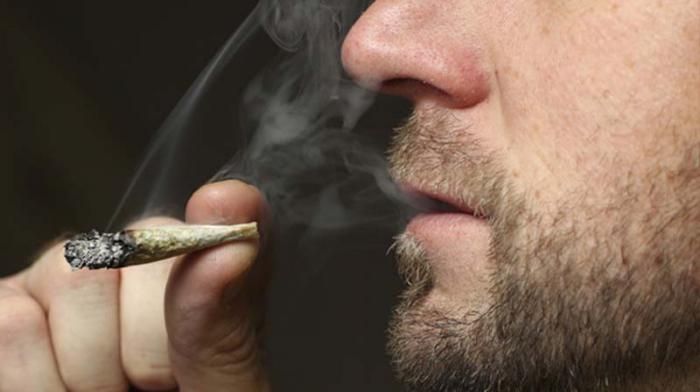
Marijuana overuse causes memory difficulties and tampers with our concentration and learning skills. Photo: Daily Información
A young Canadian with untidy blond hair and faded blue eyes walks back and forth between both ends of a boulevard in downtown Ottawa, the capital of one of the world’s richest countries, begging for money to buy marijuana. In Montevideo, Uruguay, a crazy-looking young man of about 25 offers to work as a car parking attendant for a pittance, enough so he can buy a joint. In Central American capital cities, car drivers waiting for the traffic lights to change get besieged by children eight or nine years of age performing as fire-eaters or simply holding out their hands to beg for charity on behalf of their parents, who lie hidden nearby as they wait for the “prize” to buy drugs and food.
Back in December, Brasilia’s political center was all but occupied by security forces and foreign journalists, all waiting for the arrival of a new president who would take office the following day. A few meters from the Foreign Ministry, one of the venues of the inauguration, a taxi driver warned his passengers not to roll down the windows to take pictures because of the gangs of “dope-smoking” teenagers could appear out of the blue to mug tourists.
These are personal stories, not hearsay or exaggerations. Besides, they are not isolated cases in today’s world or in the countries where I witnessed them.
Felipe met his Spanish wife through a friend who rents out his apartment in Havana. He moved to Barcelona, leaving behind his eight-year-old daughter and his parents. In his new country, he started to consume and smoke synthetic marijuana or whatever he could get his hands on. After some time, while on a visit to Cuba and a week before his return trip, he was caught in possession of small amounts of the narcotic that he had got from a dealer. He ended up in prison, which also brought a lot of suffering and trauma to his child and loved ones.
Cuban internationalist doctors cry as they share stories of children in Paraguay, Brazil, Bolivia or other South American nations who show symptoms of marijuana consumption from an early age, and others who died in their arms because they could not get any marijuana and decided to sniff paint thinners, gasoline or strychnine.
A Uruguayan psychologist, who provides therapeutic services to slum areas in Tijuana, on the U.S. border, described in his doctoral thesis, which he defended at the University of Havana, how his patients take advantage of the legalization of marijuana in southwestern U.S. states to cross the border and get a marijuana prescription for stress treatment, a sure way to maintain their addiction as they get gradually worse, both physically and mentally.
Far from tackling your ailments or bringing you benefits, he remarked, making that drug legal has boosted its use and multiplied health problems in those regions.
Similar findings were disclosed last October in a study by the French National Institute for Advanced Studies in Security and Justice (INHESJ) and the French Monitoring Center for Drugs and Drug Addiction (OFGT) about the impact of cannabis regulation on U.S. states and in Uruguay.
According to the study, “the regulated sale of marijuana in special pharmacies has led to a nationwide rising trend in all indicators for use in Uruguay and has had no significant effects on the black market”. Legalization in the U.S. has brought forth a noticeable rise in consumption, particularly among occasional and regular users aged 25 or over.
Also underlined in the study is “a major rise in hospital admissions related to presumed cannabis intoxication in two North American States” (Colorado and Washington State).
The World Health Organization (WHO) came to the conclusion in 1948 that the consumption of cannabis (marijuana, hashish and hashish oil) was dangerous from every point of view, be it physical, mental or social. More recently added to the list are the so-called synthetic cannabinoids (synthetic or laboratory marijuana), even more harmful.
Experts remark that the symptoms of marijuana intoxication appear more slowly and take longer to go away. Not only that, but that it can trigger very serious mental disorders. Its most common and socially detrimental effect is the so-called affective or amotivational syndrome, characterized by severe detachment from reality, not unlike the kind related to serious forms of schizophrenia.
[Marijuana use] impairs our thoughts, causes memory and concentration problems and tampers with learning. It also delays reaction time with visual and auditory stimuli, disrupts time perception and hinders coordination. It also causes bronchitis and lung cancer in a much larger proportion than smoking. Moreover, it is known to affect our sex life and reproductive capacity, not only because of the resulting dissociation but also the reduction of our hormonal level and sperm motility that it brings with it. Marijuana consumption also has catastrophic consequences on addicted mothers, such as congenital deformities and premature births.
Furthermore, it paves the way for lack of coordination and balance, tachycardia, conjunctival injection (bloodshot eyes), dry mouth and throat syndrome, and drowsiness, as well as death by heart arrhythmia.
Marijuana is young people’s gateway drug and a springboard to the abyss of other even more dangerous substances.
In Europe there has been evidence since the 1970s of a consumption cycle that starts with marijuana and then leads to other more harmful substances like LSD, heroin or morphine. None of them bring a happy end, for they either blow you out or kill you.
FIVE FACTS ABOUT MARIJUANA:
- Even if its properties were initially considered little dangerous and medically useful, its consumption has recognizably catastrophic effects.
- Together with alcohol and other drugs, it ranks high on the list of the first psychoactive substances capable of causing major changes in human behavior.
- Advocates of legalization should assess the impact of marijuana-induced brain lesions on our households, workplaces and communities, since its consumption affects rationality at the same time as it releases the most primitive structures and functions.
- There is sufficient updated scientific evidence that it produces schizophrenia, cognitive impairment, cancer and violent outbursts.
- Consuming marijuana before the age of 18 irreversibly reduces our intelligence quotient in up to ten units.
Source: Interview granted to journalist Lisandra Fariñas xcby Dr. Ricardo A. González Menéndez, a consultant with the Integrated Addiction Treatment Service of Havana’s Psychiatric Hospital and chairman of the National Medical Ethics Commission.
FARC goes for Colombian presidency

Photonoticia: The FARC goes for the Colombian Presidency
La Fuerza Alternativa Revolucionaria del Común lanzó recientemente su campaña para los comicios presidenciales y legislativos
Author: Redacción Internacional | internacionales@granma.cu
January 30, 2018 03:01:42
A CubaNews translation.
Edited by Walter Lippmann.

The Revolutionary Alternative Force of the Common recently launched its campaign for the presidential and legislative elections
The signing of the Peace Agreement negotiated in Havana opened the doors of civilian life and political struggle to the FARC guerrilla, which is now a political party with the same acronym by which it was identified for more than a quarter century.
The Common Revolutionary Alternative Force recently launched its campaign for this year’s presidential and legislative elections. Timoleón Jiménez, leader of the former guerrilla secretariat, heads the list to occupy the Casa de Nariño [Colombia’s presidential palace}.
The Peace Agreement establishes that the FARC are entitled to ten Congress seats, regardless of their results at the polls.
Subscribe to Blog via Email
| M | T | W | T | F | S | S |
|---|---|---|---|---|---|---|
| 1 | 2 | 3 | 4 | 5 | 6 | 7 |
| 8 | 9 | 10 | 11 | 12 | 13 | 14 |
| 15 | 16 | 17 | 18 | 19 | 20 | 21 |
| 22 | 23 | 24 | 25 | 26 | 27 | 28 |
| 29 | 30 | 31 | ||||
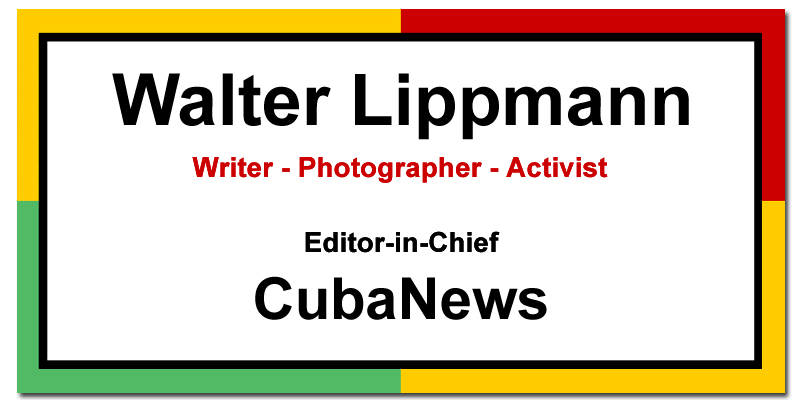


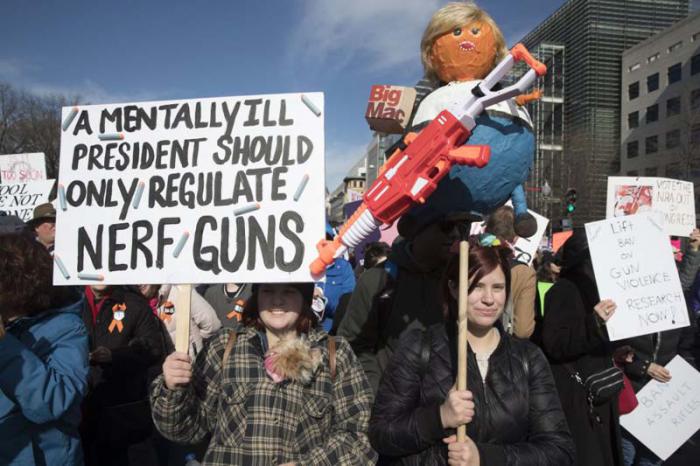
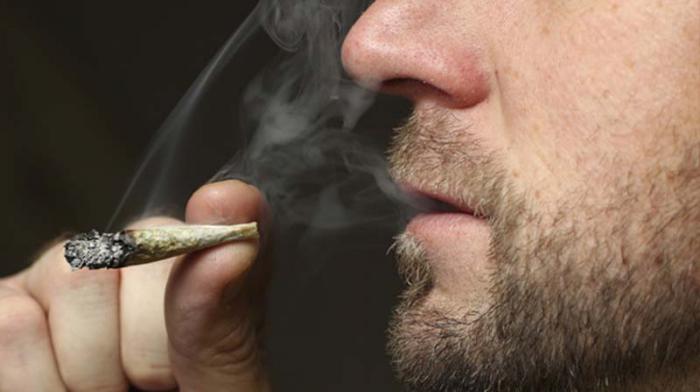
You must be logged in to post a comment.